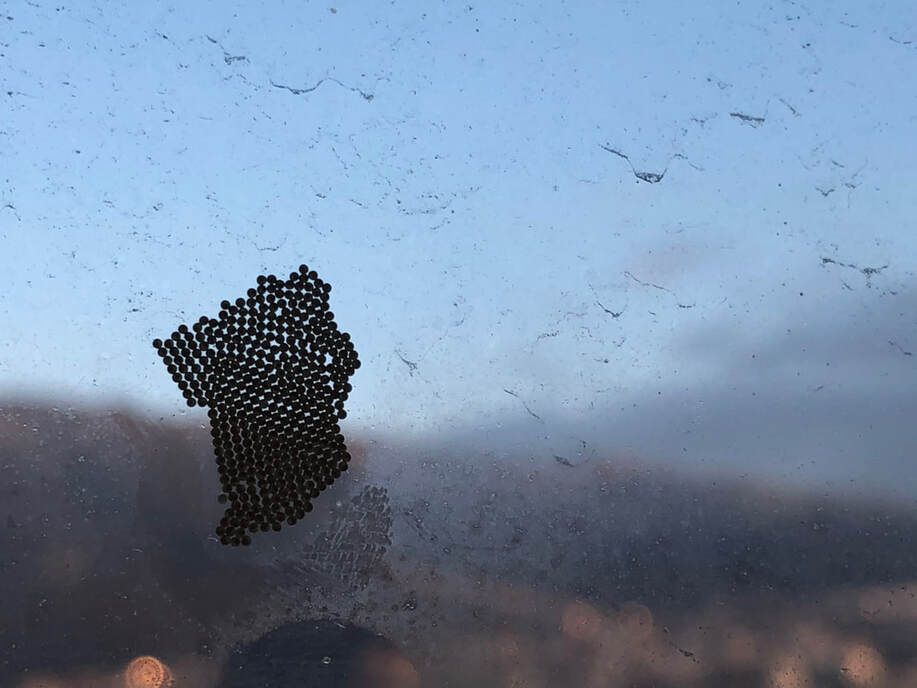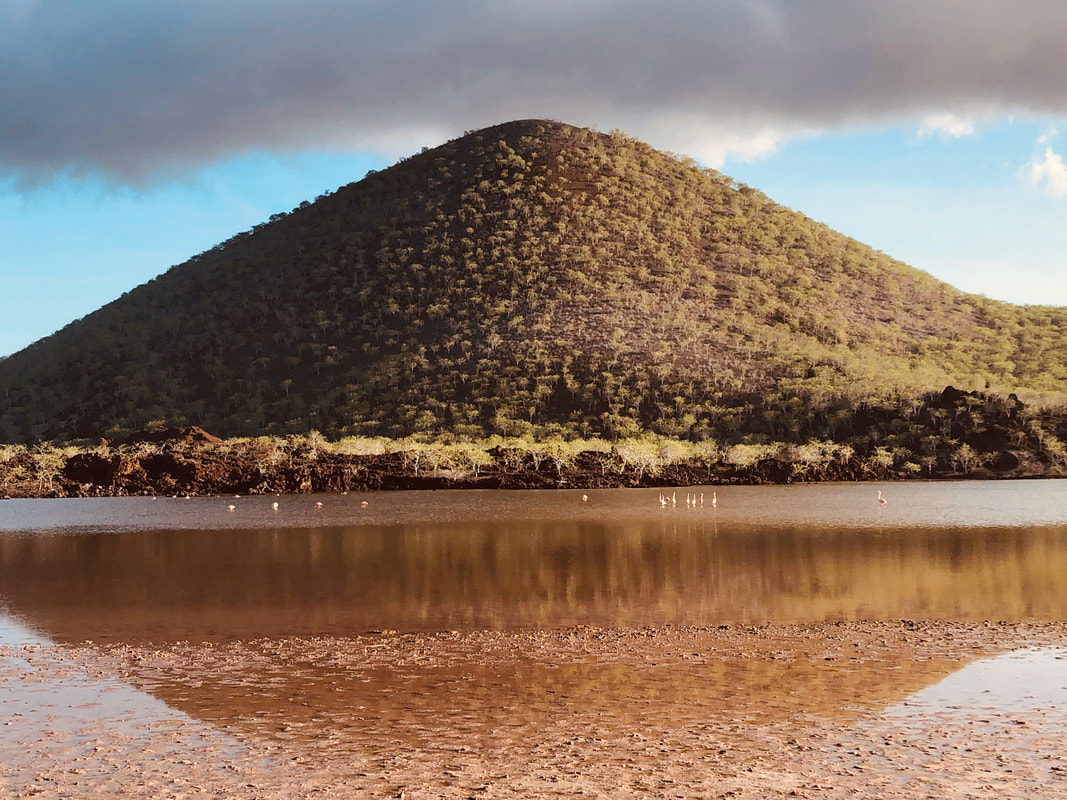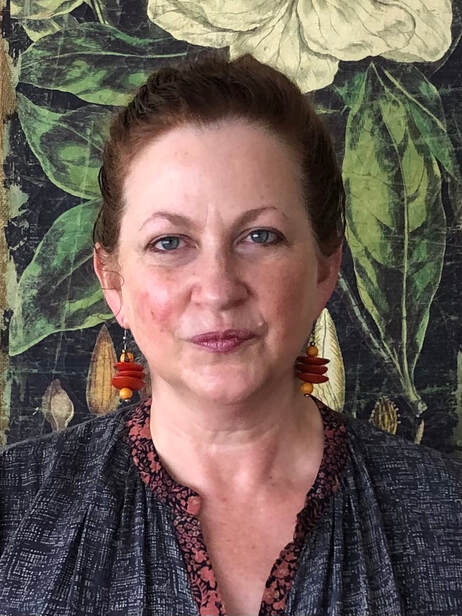|
5/10/2020 0 Comments Universal DonorMy mother was a universal donor. I remember her telling the story of how when she was in college a boyfriend asked her to marry him but said that before she gave him her answer she needed to read a 70-page missive that he had written by hand. He planned on being a pastor and so much of the letter was about his expectations of her as a "good pastor's wife." One of the requirements was that she play piano in his church. My mother was in turmoil. She thought she ought to marry him but wasn't so keen on all the requirements, nor was she so keen on him. She found him a bit arrogant and he was very invested in the idea that women should be silent and subservient to their husbands. My mother wasn't the silent type. She was also peeved that he thought her fitting, in part, because she played the piano. Finally, after much prayer and heartfelt conversations with my grandmother, she gathered her courage and told him no. And then she found my father. My father was very shy and my mother was extraordinarily outgoing. She basically organized the relationship and eventually, they were married. He was a doctor headed for the Amazon and, by good fortune, she had O- blood and was a universal donor. My dad had married a walking blood bank. In Shell, our family lived across the street from the hospital. We didn't have a telephone and when emergency patients came in at night the nurse would cross the street and throw pebbles at my parent's window to wake my father up. Frequently, if the patient needed blood, my father would return, gently wake my mother, ask my mother to stretch out her arm and take her blood. It always made me smile that my mother was annoyed by the pastor who assumed she would play piano in his church, but not phased by the doctor who would take her blood whenever a patient needed it.
0 Comments
4/26/2020 0 Comments Compost of CreativitySunday, April 26. Day 41 of Quito’s COVID19 Lockdown.
We wake before dawn and watch the lights shift across Pichincha. My husband muses, “Boredom is the compost of creativity.” I check in on my baby caterpillars to see if they survived the night. I open the jar and my heart sinks as I see dozens of little black balls. I think the caterpillars have died and these are the remains of their tiny bodies. My guilt rises. I grab my phone and focus my camera into the jar and am relieved to find the babies happily inching along and see that the black balls are caterpillar scat. They are eating! They have eaten holes into one of the lemon verbena leaves and so I decide to add more and break off a twig from my potted lemon verbena plant, adding it to the jar. I have been beating back a plague of aphids in my beloved lemon verbena and one of the surviving aphids falls into the jar with the twig. I balance my phone on the top of the jar, focus my camera and turn on the video. By sheer luck, I capture a baby caterpillar’s first encounter with this aphid and, by all accounts, my housebound aphid’s first encounter with a caterpillar. I film them as they slowly approach each other. The aphid tentatively reaches out it’s antenna to touch the caterpillar. The caterpillar raises its body, dancing back and forth momentarily like a miniature cobra. She stretches out her neck and then chomps on the aphid’s antenna. The aphid jumps back and stumbles away. Wild kingdom, miniature scale. Happy Sunday everyone. 4/25/2020 0 Comments CuarentenaSaturday, April 25. Day 40 of Quito’s COVID19 Lockdown.
Day 40. Quarantine or “Cuarentena” comes from the Italian word “cuarenta,” meaning 40 and refers to the 40 days that ships arriving in Venice would have to wait before disembarking in an effort to protect the city from the spread of the Black Plague. In the Genesis story of Noah’s Ark and the Great Flood, it rained for 40 days and 40 nights before stopping. After escaping Pharoah and crossing the Dead Sea, the 12 tribes followed Moses and wandered in the desert for 40 years, lost and murmuring. Before entering Jerusalem on Palm Sunday, Jesus was tempted by Satan for 40 days in the desert. The Christian calendar marks 40 days from Ash Wednesday to Easter. Clearly the number 40 is mythically important and seems to connect to forced reflection in an era of tumult, confusion, and radical change. On the news today, reports multiply of Donald Trump encouraging scientists to inject COVID patients with detergent in order to cleanse the human body of the virus. I feel relieved that we have made it this far alive. The morning sun grows stronger and it is clearly time to move my itty bitty caterpillar colony into a jar. I am worried that when I open their incubator they will fall onto the floor and happily find my house plants or favorite wool sweaters and happily devour them. Out of an abundance of caution, I tape a paper bag to the window below the incubator in order to catch any stragglers. I carefully peel off the tape around the plastic viewing window and then use two envelopes to collect the caterpillar babies. I slide them off the paper. Some of the caterpillars spin out fine threads as they fall into the jar. I add in lettuce. I worry about them eating and add a few other kinds of leaves just in case. A broken begonia leaf. Two lemon verbena leaves gathered from my indoor garden. I measure one of the caterpillars with a clear plastic ruler. 2 millimeters! I watch them scamper along the glass for a long time through the amplified viewing panel of my phone camera. They scrunch along intently like little inchworms. 4/24/2020 0 Comments IncubationFriday, April 24 Day 39 of Quito’s COVID Lockdown.
Day 7 of Insect Egg Incubation. This is our 6th Shabbat in quarantine. Already we are forming new rituals. Every Friday night we family tele celebrate cross continentally. We hook up Zoom and connect three separate households. My daughter harbored with my brother and sister-in-law in Maryland and my husband’s sister and her wife who dial in from just outside of D.C. In the late afternoon, through the screen of my Iphone, I make challah with my daughter and chat with my brother in his kitchen. In this time of our metamorphosis, a gazillion itty bitty caterpillars have been born on our windowpane held in place by my makeshift incubator. Just in time for Shabbat! I watch them amazed as they scoot along the pane with the quiet city and volcano behind them. That night I dream that my house has been invaded by hundreds of huge, fat caterpillars. They crawl on the beams, climb up the stairs, pour out of the closets, march in trains out from under the living room rug. In the dream, I see their mother—a beautiful triangular moth with brown patterns on her wings, fancy red fern antenna and elegant feet, and fluffy red, white and black stripes down her body. She is extraordinary and I am comforted that these fat marching caterpillars overtaking my home are on their way to this new brilliant state of being. 4/17/2020 0 Comments Geometry of MothsApril 17, Day 32 of Quito’s COVID19 lockdown. I wake before dawn and check my phone. It opens to my calendar and helpfully reports “no upcoming destinations.” I amble out to the living room and as the sun rises I notice something odd in the upper third of our window. For the last few days I thought it was a pale yellow smudge on the outside of the pane but today I take the time to look more closely and find that the smudge is a clutch of eggs laid on the inside of the glass. What mother chose this spot for her offspring? Her creative geometry dazzles me. All those creatures waiting, their lives unfolding and soon they will emerge with new eyes to take in the expansive city and the mesmerizing volcano beyond. I rummage through my storage closets and find a package of picture hangers encased in carton with a small plastic viewing window. It’s perfect. I empty it out, strip off the carton, set the viewing window over the clutch of eggs and seal it with scotch tape. I step back and admire this makeshift incubator. I worry momentarily that they may need fresh air or that perhaps they will scorch from the sun. But what can I do? This is where their mother laid them and this is how I can best watch over them without risking a mass caterpillar escape through our apartment.
2/7/2020 0 Comments We live in the ring of fire...... along the Avenue of the Volcanes: 32 volcanoes on our mainland and 15 volcanoes in the Galapagos Islands. Now, like me, you may have been taught in an elementary science class the definition of Life and. in that unit, you learned that rocks and mountains are inanimate.
And while you memorized the rock cycle and learned about the different parts of a volcano, you learned these things with the knowledge and certainty that these lumps of rock and soil, with their seething gases and molten lava, spitting out mud and rocks, spewing lava and vapor, these mountains with their underground chambers and springs and lakes, waterfalls and rivers, these ancient moving geological formations are most certainly NOT alive. I was born on the flanks of the sleeping volcano Guagua Pichincha. As a child I lived in the Ecuadorian Amazon and at night I would stay up late, my eyes pressed into binoculars, watching the volcano Sangay miles across the canopy erupt in blue and green gases that hovered over the crown while glowing lava flowed down the gleaming white cone. Years later, I lived on the flank of the beautiful and seductive Isabel Tungurahua. I watched for her red rocky face at sunset and at dawn. I bathed in her thermal pools and witnessed the first thin spiral of vapor rise up from her crater in 80 years. I felt the earth rumble beneath me at her complaint and abandoned a town I loved, 7 months pregnant, 2 weeks in advance of a military evacuation of 22,000 people as Tungurahua erupted in spectacular fury. One week later, in Quito, I watched in surprise from my living room window as an unexpected plume of vapor, gas and ash burst, without warning, up out of the Guagua Pichincha rising 12 kilometers into the cerulean sky. I have swept ash from our porch and closed up windows and doors as a noxious sulfur cloud from Reventador seeped over our house. I have sent emergency volcano kits to school with my children including goggles, masks, band aids, suero fisiológico, bottled water, and snacks. I have driven through falling ash, thicker than a blizzard, as Cotopaxi erupted, the prickly sound of pumice smattering across our car. As I write, 3 of our volcanoes--Reventador, Sangay, and El Cumbre in the Galápagos--are in an active process of eruption. This month a brand new scientific study warns that Tungurahua´s western flank may soon collapse. The mountains are giving birth. From my very limited experience--from this tiny window that is my life--I can tell you, most certainly, that these mountains are anything but inANIMATE. I look it up: Anima. ... The Latin origin of the word is animus, ‘rational soul, life, or intelligence,’ from a root that means ‘to blow’ or ‘to breathe.’ From the Latin. A noun. Declension: 1st declension Gender: feminine Definitions: 1. air (element) 2. breathing 3. life 4. soul, spirit, vital principle 5. wind, breeze Did you know that volcanoes breathe? |
Archives
December 2021
Categories |
Proudly powered by Weebly





 RSS Feed
RSS Feed